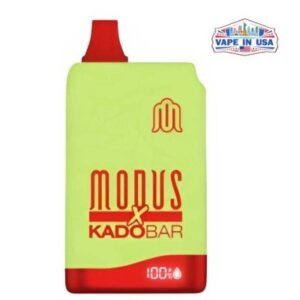Skin irritations caused by poison ivy, poison oak, and poison sumac can be incredibly uncomfortable. These plants release urushiol, an oily resin that causes red, itchy, and blistering rashes on the skin. For decades, people have turned to home remedies and OTC products, but few are as effective and trusted as Ivy-Dry Cream. This topical treatment is specifically formulated to relieve the symptoms of plant-based skin irritations and is known for its fast-acting, soothing, and healing properties.
Table of Contents
ToggleIn this article, we explore everything you need to know about Ivy-Dry Cream — how it works, its ingredients, benefits, usage tips, and why it remains one of the best treatments for plant-induced rashes.
What is Ivy-Dry Cream?
Ivy-Dry Cream is an over-the-counter medicated cream designed to relieve the discomfort and symptoms caused by skin exposure to poison ivy, poison oak, and poison sumac. Manufactured by Ivy-Dry, Inc., the product is part of a trusted line of dermatological solutions for allergic contact dermatitis caused by poisonous plants.
The cream provides fast relief by drying out the oozing and weeping of the skin while reducing itching, inflammation, and discomfort. Its non-greasy formula allows for easy application and quick absorption.
Active Ingredients and Their Benefits
The strength of Ivy-Dry Cream lies in its combination of powerful, dermatologist-recommended ingredients:
1. Benzyl Alcohol (10%)
A topical anesthetic and antiseptic, benzyl alcohol provides fast pain relief and helps reduce itching. It also acts as a mild antimicrobial agent, preventing secondary infections in broken or blistered skin.
2. Camphor (0.5%)
Camphor creates a cooling sensation that helps to distract the brain from itching. It has anti-inflammatory and mild analgesic properties, making it excellent for soothing irritated skin.
3. Menthol (0.5%)
Menthol provides a cooling effect and acts as a counterirritant, reducing itchiness and promoting comfort.
4. Zinc Acetate (0.1%)
Zinc acetate is known for its drying and astringent properties. It helps to dry up oozing blisters and speeds up the healing process of inflamed skin.
These ingredients work together to tackle the multiple symptoms of plant-based dermatitis — pain, itching, oozing, and inflammation — while promoting the healing process.
Key Benefits of Ivy-Dry Cream
✅ Fast Itch Relief
The menthol and camphor in the cream offer immediate cooling sensations that reduce the urge to scratch, while benzyl alcohol numbs the skin.
✅ Dries Weeping Blisters
Zinc acetate is highly effective at drying out oozing skin and preventing further irritation and infection.
✅ Prevents Secondary Infections
By numbing pain and controlling moisture, the cream minimizes the risk of scratching-induced infections.
✅ Non-Greasy and Easy to Apply
Unlike some ointments or lotions, Ivy-Dry Cream absorbs quickly and doesn’t leave a sticky residue, making it convenient for day or night use.
✅ Dermatologist-Recommended
It is safe for most skin types and often recommended by doctors for allergic skin reactions to plants.
How to Use Ivy-Dry Cream
To maximize the effectiveness of Ivy-Dry Cream, follow these simple steps:
-
Clean the affected area: Wash the skin gently with lukewarm water and mild soap to remove any residual urushiol from the plant.
-
Pat dry: Do not rub the area harshly. Gently pat dry with a soft towel.
-
Apply Ivy-Dry Cream: Squeeze a small amount and apply a thin layer directly onto the affected skin.
-
Repeat as needed: You can apply the cream up to 3–4 times daily or as directed by a healthcare professional.
Note: Always read and follow label instructions, and consult your doctor if the rash worsens or spreads significantly.
Who Can Use Ivy-Dry Cream?
Ivy-Dry Cream is suitable for both adults and children over the age of two. However, it should not be applied on broken or severely damaged skin unless advised by a healthcare professional.
Pregnant or breastfeeding women should consult a physician before use. Those with known allergies to any of the active ingredients should avoid use or perform a patch test first.
Tips for Preventing Poison Ivy, Oak, and Sumac Exposure
While Ivy-Dry Cream is an effective treatment, prevention is always better. Here are some quick tips to avoid these plant-induced rashes:
-
Learn to identify poisonous plants and avoid contact with them.
-
Wear long sleeves and pants when hiking or working in the garden.
-
Wash your clothes and skin immediately after potential exposure.
-
Clean gear and pets that may have brushed up against the plants.
-
Use barrier creams or protective sprays if you expect to be in risky environments.
Why Ivy-Dry Cream Stands Out
There are several poison ivy creams on the market, but Ivy-Dry Cream distinguishes itself through its fast action, trusted formulation, and reliable relief. Its dual function of itch relief and drying action, combined with its easy-to-use formula, makes it a go-to product for people suffering from seasonal or accidental exposure to irritating plants.
Additionally, it is manufactured by a company with decades of expertise in treating dermatitis caused by plant allergens. Ivy-Dry products have consistently received positive reviews from consumers, dermatologists, and pharmacists alike.
Conclusion
Ivy-Dry Cream is a reliable, effective, and affordable solution for anyone dealing with the painful and irritating symptoms of poison ivy, oak, or sumac. With its powerful ingredients and user-friendly formula, it provides fast relief from itching, reduces inflammation, dries oozing rashes, and supports healing.
Whether you’re an avid hiker, camper, gardener, or simply someone who encountered these plants by accident, keeping a tube of Ivy-Dry Cream in your medicine cabinet can save you from days of misery. Trusted by generations and backed by science, it’s one of the best defenses against nature’s most irritating plants.
Relieve the itch. Soothe the skin. Trust Ivy-Dry Cream.






